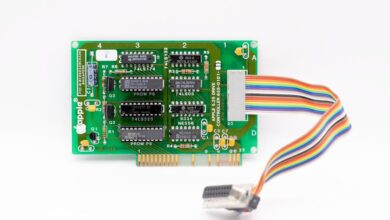The Ever-Shifting Sands of Data: Why Schema Evolution is a Game-Changer

In the world of data engineering, there are few things as universally dreaded as the unexpected schema change. Picture this: your beautifully crafted, real-time data pipeline is humming along, dutifully capturing every transaction, every event, every critical piece of information. Then, BAM! A new column gets added to a source table, a data type shifts, or heaven forbid, a column is renamed. Suddenly, your pipeline chokes, errors cascade, and you’re left scrambling to fix what feels like a fundamentally broken system. Sound familiar? It’s a feeling all too common, and it’s precisely why the latest development in the Apache SeaTunnel ecosystem is such a significant game-changer.
For those leveraging the power of Flink Change Data Capture (CDC) to keep their data flowing in real-time, the challenge of schema evolution has often been a tightrope walk. But no more. We’re thrilled to share that robust schema evolution support for Flink CDC has officially landed in Apache SeaTunnel. This isn’t just a minor update; it’s a leap forward in building truly resilient, self-healing data pipelines. And, as a bonus, this pivotal advancement comes with an inspiring story of open-source collaboration, driven by a brilliant student’s dedication.
The Ever-Shifting Sands of Data: Why Schema Evolution is a Game-Changer
Let’s be honest, data sources are rarely static. Business requirements evolve, applications get updated, and databases are modified. In a perfect world, these changes would be communicated well in advance, giving data engineers ample time to adjust their pipelines. In reality? Not so much. A new `marketing_campaign_id` column appears, a `price` field changes from `DECIMAL(10,2)` to `DECIMAL(12,4)`, or a less-used `status_flag` column is dropped entirely. Each of these seemingly small alterations can send ripples of disruption through an unprepared data pipeline.
Traditionally, handling such schema evolution with CDC tools has been a manual, resource-intensive headache. Without proper support, your data ingestion jobs would fail as soon as they encountered data that didn’t match their expected schema. This often meant pausing pipelines, manually adjusting definitions, redeploying jobs, and, crucially, risking data loss or inconsistency during the downtime. For real-time analytics, operational dashboards, or critical business processes relying on fresh data, this downtime isn’t just an inconvenience; it’s a direct hit to business operations.
True schema evolution support means your data integration platform can intelligently detect these changes at the source and adapt accordingly. It’s about empowering your pipelines to not just *handle* change, but to *embrace* it without breaking a sweat. Imagine a scenario where adding a new column to a production database automatically propagates through your CDC pipeline into your data warehouse without any human intervention. That’s the promise, and now, the reality, that Apache SeaTunnel with Flink CDC is delivering.
Flink CDC and Apache SeaTunnel: A Power Couple Getting Even Stronger
Before diving into the new capabilities, let’s quickly recap what makes Flink CDC and Apache SeaTunnel such a potent combination for modern data architectures. Flink CDC, as the name suggests, is an incredibly powerful capability within Apache Flink that allows you to capture real-time changes from various relational databases (like MySQL, PostgreSQL, Oracle, SQL Server, and more). It taps into transaction logs to provide a low-latency, highly accurate stream of inserts, updates, and deletes, effectively turning your database into a real-time event stream.
Then we have Apache SeaTunnel. Think of SeaTunnel as your ultra-flexible, high-performance data integration platform. It’s built on top of distributed computing engines like Flink and Spark, providing a vast array of connectors to source data from almost anywhere and sync it to virtually any destination. Whether you’re moving data from databases to data lakes, streaming logs to messaging queues, or consolidating data for analytics, SeaTunnel aims to simplify the entire process, making complex data pipelines manageable and efficient.
When you pair Flink CDC with Apache SeaTunnel, you get an end-to-end, real-time data synchronization solution. Flink CDC provides the “what changed,” and SeaTunnel handles the “where to send it” and “how to get it there efficiently.” This partnership has always been strong, enabling users to build robust real-time data pipelines. However, the lack of native, automatic schema evolution support meant that the “set-it-and-forget-it” dream often hit a snag when source schemas inevitably shifted.
Now, with this new support, the integration reaches a new level of maturity and resilience. SeaTunnel can intelligently detect schema changes originating from the Flink CDC source connector and dynamically adapt the downstream operations, whether that’s adjusting the schema of a target table in a data warehouse or modifying the structure of data sent to a message queue. This dramatically reduces the operational burden and increases the reliability of your real-time data flows.
Under the Hood: How SeaTunnel Handles the Schema Dance
So, how does this magic actually happen? At a high level, the schema evolution support in Apache SeaTunnel for Flink CDC works by enabling the system to understand and react to schema changes. When a change occurs in the source database (e.g., a new column is added), Flink CDC captures this metadata change along with the data changes. SeaTunnel then ingests this metadata, parses it, and dynamically adjusts its internal data processing logic and, crucially, its communication with the destination system.
For example, if you’re syncing data to a data lake using Parquet files, SeaTunnel can update the Parquet schema on the fly to accommodate the new column. If you’re sending data to a relational database, it might issue an `ALTER TABLE` statement or ensure that the new column is correctly mapped. This intelligent adaptation ensures that your data pipeline remains unbroken and your data remains consistent, even as its structure changes upstream. It’s about transforming what used to be a point of failure into a seamless, automated process.
Behind the Scenes: A Student’s Impact on the Open-Source World
What makes this particular advancement even more special is its origin story. This vital schema evolution feature for Flink CDC in Apache SeaTunnel wasn’t developed in isolation by a large corporate team. Instead, it was spearheaded by Dong Jiaxin, a talented student from the University of Science and Technology Beijing (USTB), during the Open Source Promotion Plan (OSPP).
The OSPP is an incredible initiative that connects university students with real-world open-source projects, allowing them to contribute to major software ecosystems under the guidance of experienced mentors. It’s a fantastic bridge from classroom theory to practical codebase impact. Dong Jiaxin’s project focused specifically on bringing robust schema evolution capabilities to Apache SeaTunnel’s Flink CDC connector. This was a challenging task, requiring deep understanding of Flink, CDC principles, and the intricacies of distributed data processing.
This success story is a powerful testament to the vitality of the open-source community and the incredible talent fostered through programs like OSPP. It showcases how dedicated individual contributions can lead to significant improvements in widely used projects, benefiting countless users globally. Dong Jiaxin’s work is a prime example of how fresh perspectives and focused effort can tackle complex engineering problems, making cutting-edge technologies more accessible and reliable for everyone.
Conclusion: Building Data Pipelines for an Unpredictable Future
The addition of Flink CDC schema evolution support in Apache SeaTunnel is more than just a new feature; it’s an investment in the future resilience of your data infrastructure. In a world where data is constantly in flux, the ability to build pipelines that can adapt autonomously is no longer a luxury, but a necessity. This advancement dramatically simplifies operations, reduces the risk of pipeline failures, and frees up valuable engineering time that would otherwise be spent on manual adjustments.
It empowers data engineers to design “set-and-forget” data synchronization jobs with greater confidence, knowing that their systems can gracefully handle the inevitable evolution of source schemas. This translates directly into more reliable data, faster insights, and a more agile response to changing business needs. As we continue to push the boundaries of real-time data processing, features like this underscore the commitment of communities like Apache SeaTunnel to build robust, user-centric solutions. It’s an exciting time to be working with data, and with these tools, we’re better equipped than ever to navigate its ever-changing landscape.





